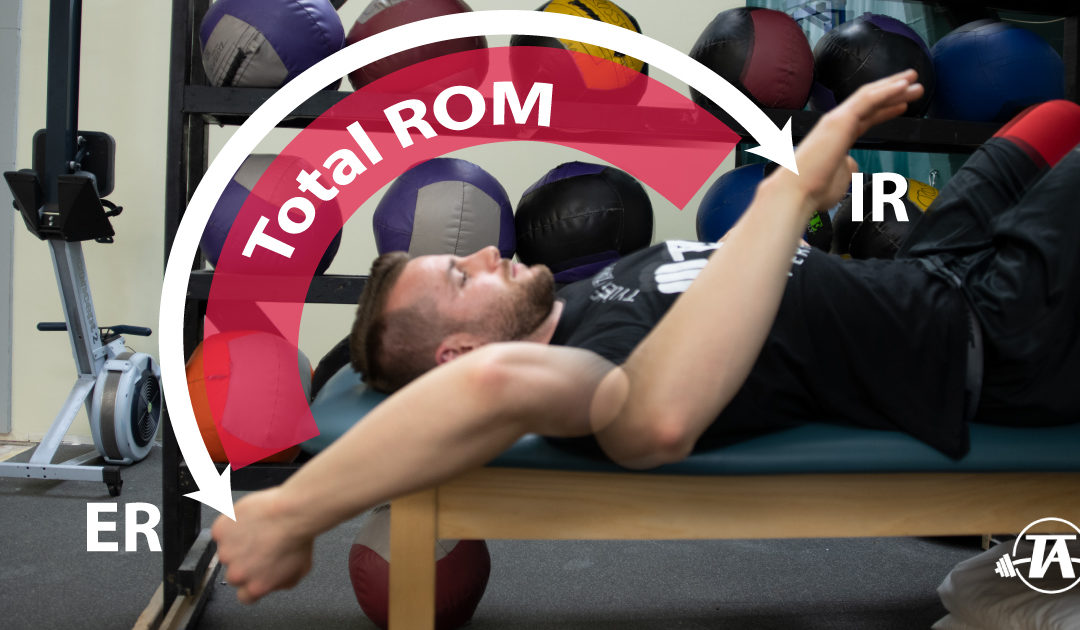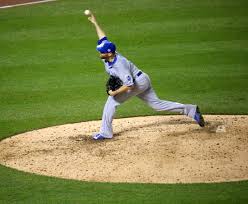GIRD is an acronym meaning glenohumeral internal rotation deficit. This is a fancy way of saying that a shoulder has gained external rotation range of motion (ROM) while losing internal rotation ROM. Unfortunately, for a long time GIRD has been seen as a problem that needs to be fixed.
For years, if you went to a doctor or physical therapist with shoulder pain related to throwing, they would take you through a passive ROM test. The test would show a decrease in internal rotation ROM and an increase in external rotation ROM, causing them to gasp with shock and subsequently prescribe you a bunch of stretches and band exercises.
Essentially, they were treating GIRD as a pathology rather than what it is, a natural and advantageous adaptation to throwing.
Why does GIRD happen?
When athletes are young their growth plates have not closed yet, meaning that the bone is still growing. If they begin pitching at a young age, prior to the growth plate closing, they will make changes to the way their body adapts to the stress of throwing (Crockett et al., 2002).
Due to the significant torque present at the shoulder during throwing and the significant external rotation ROM requirements, the humerus becomes retroverted, meaning that the humerus becomes tilted back, biased toward external rotation thereby inhibiting internal rotation to a certain degree. Humeral retroversion seems to account for the loss of internal rotation to within about 5 degrees (Crockett et al., 2002).
Why is GIRD beneficial?
This adaptation may be extremely helpful for both performance and health purposes. The increased external rotation ROM leads to a greater distance over which acceleration forces can be applied to the ball, and thus improved potential for velocity.
Additionally, it may be helpful health-wise as the new resting position of the humerus in the glenoid fossa means that external rotation requires less stretching of the soft tissue of the anterior shoulder and that tissue can stay in its elastic range and perform better as stabilizers of the glenohumeral joint (Crockett et al., 2002).
Don’t we need internal rotation?
We do need internal rotation, and it is a huge factor in terms of creating velocity. Specifically, internal rotation and elbow extension are the forces that accelerate the arm and the ball during the throwing motion. However, the ball is actually released while the shoulder is externally rotated between 40 and 60 degrees (Pappas et al., 1985). So, the loss of internal rotation should not affect velocity.
Training Considerations
Don’t go nuts with stretching into internal rotation. Remember, this is a beneficial adaptation. Some soft tissue work and light stretching of the tissue at the posterior shoulder is probably fine, but nothing extensive and nothing aggressive. Since this adaptation is a combination of bony changes and soft tissue changes, aggressive stretching can cause problems. Basically, trying to stretch past a bony block can lead to discomfort and is unlikely to actually improve the ROM.
Additionally, the rotator cuff should be strong, and the scapula should move well. The rotator cuff keeps the humeral head centered on the glenoid fossa and solid movement of the scapula can also help with this.
Think of it this way, the humeral head is a golf ball sitting on a golf tee that is the labrum on the glenoid fossa. In order to optimize health and performance, the scapula needs to move well so that the humeral head doesn’t move all over the place to create motion. If the scapula does not move well, the rotator cuff muscles have to work harder in order to keep the humeral head where it needs to be.
Conclusion
GIRD is not a pathology, but an advantageous adaptation that may actually help to shape youth development programs. That is, because this adaptation likely happens at a young age and may help determine the future ceiling of performance, throwing programs could be directed at safely creating this adaptation.
Check out this video for an in-depth explanation:
Check out my summer baseball development program or contact me with any questions about remote training.
Resources
Photo:
“Wade Davis closes out #WorldSeries” by Arturo Pardavila III
Crockett HC, Gross LB, Wilk KE, Schwartz ML, Reed J, O’Mara J, Reilly MT, Dugas JR, Meister K, Lyman S, Andrews JR. (2002) Osseous adaptation and range of motion at the glenohumeral joint in professional baseball pitchers. The American Journal of Sports Medicine.
Pappas AM, Zawacki RM, Sullivan TJ (1985) Biomechanics of Baseball Pitching. A Preliminary Report. The American Journal of Sports Medicine.


